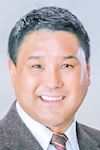
Judd Matsunaga
Did you know that FALLS are the leading cause of accidental death in older adults? Every 15 minutes, an older adult dies from a fall-related injury. According to a special health report from Harvard Medical School called “Better Balance,” every 11 seconds, an adult age 65 or older is treated in the emergency department for an injury from a fall.
Balance is a complex phenomenon involving your eyes, ears, muscles and brain. It’s something you may take for granted … that is until you suffer a serious fall. As an old adage tells us, “An ounce of prevention is worth a pound of cure.” Scan this list for any problems that raise your risk of falling. Then, take action.
- Eye (eyewear) problem: Reading glasses, bifocals, trifocals and progressive lenses are enormously helpful in correcting vision, but they can be hazardous when you’re walking. Also, decreasing depth perception, reduced sensitivity to contrast and vision less than 20/60 all contribute to falls. So do eye disorders. Fixes: Have your eyes tested annually. Discuss options for correcting your vision. Install appropriately bright lighting at home.
- Poor posture: Poor posture can throw your body off balance. Fixes: Try to stand up straight. Check your posture. Here’s what to aim for: chin parallel to the floor, ears in line with your shoulders and shoulders in line with your hips.
- Weak muscle: Loss of strength and power — particularly in the lower body — erodes balance. Fixes: Exercise can improve strength, reflexes and balance, while stretches enhance flexibility.
- Stiff, sore joints: Stiff joints limit movement and make it harder to catch yourself if you do trip. Because it may be painful to walk, you may move less, which over time will contribute to further pain, muscle loss and stiffness. Fixes: Discuss ways to ease painful, swollen joints with your doctor. Strengthening exercises and stretches will help, too. If you are overweight, try to lose weight.
- Weak ankles: Weak ankles or stiff, inflexible ankle joints make walking harder. Stumbles may occur more when the rear foot doesn’t clear the ground properly. Fixes: Stretches and strengthening exercises will help.
- Foot pain: Foot pain or numbness may make falls more likely. Fixes: Discuss options for easing pain with your doctor. Call your doctor if you notice pain, burning or numbness in your feet.
- Unstable shoes: High heels, slip-on shoes, loose slippers and smooth, slippery soles may promote falls. Fixes: Wear sturdy shoes, preferably with low or flat heels and nonskid, rubber soles. Avoid wearing just socks.
- Chronic diseases: Blood pressure fluctuations, heart problems, inner ear disorders and nerve damage are among the ailments that contribute to falls. Fixes: Consult your doctor if you suffer from dizziness or other balance problems.
- Medications: Many medications cause dizziness or drowsiness that can precede a fall. Fixes: Report symptoms to your doctor. Discuss whether changing medications or lowering dosages might help.
- Alcohol use: Alcohol impairs judgment — a veritable recipe for falls. Mixing medications and alcohol can exacerbate side effects like dizziness or drowsiness. Fixes: Avoid or limit alcohol. This is especially important if you take medication or have labyrinthitis or Ménière’s disease. If you do drink, be aware of how alcohol affects you.
- Excess weight: Excess weight can cause gait problems that may affect your center of balance. Being overweight or obese also puts painful strain on your knees and hips. Being overweight also increases the risk of diabetes, which can lead to neuropathy in your feet that can affect balance. Fixes: You can reduce pressure on the knee by strengthening the quadriceps muscles on the front of your thighs through regular balance workouts and daily walks, if possible. Better yet, try to reach a healthier weight by combining these workouts with a healthy diet.
In conclusion, the Harvard Study found that the most promising strategy for addressing intrinsic (you — not the broken pavement) falling issues is exercise. Furthermore, the most effective exercise programs for fall prevention are ones that incorporate both balance work and functional exercises that mimic everyday activities.
“Several studies show that exercise and activity, specifically those that help in strengthening, flexibility and balance, can make a significant difference in minimizing one’s chance of falling,” says Jennie Chin Hansen, president of AARP, which has made fall prevention a priority in its efforts to promote healthy behaviors.
Judd Matsunaga is the founding attorney of Elder Law Services of California, a law firm that specializes in Medi-Cal Planning, Estate Planning and Probate. He can be contacted at (310) 348-2995 or judd@elderlawcalifornia.com. The opinions expressed in this article are the author’s own and do not necessarily reflect the view of the Pacific Citizen or constitute legal or tax advice and should not be treated as such.



